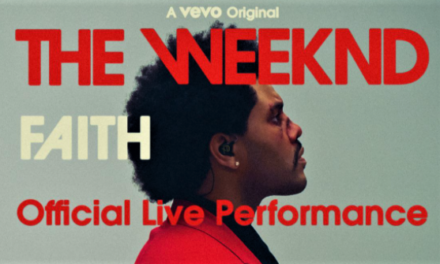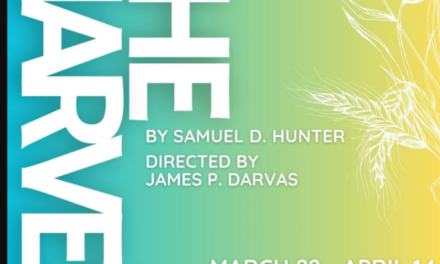
L-R: Producer and Director Mark Schmidt with Karl Backus discussing a scene on the filming of WALKING WITH THE ENEMY.
By Danny R. Johnson
SAN DIEGO–The young and vivacious Elek Cohen, the lead character played by Jonas Armstrong in the San Diego based Liberty Studios’ April 25, 2014 World Premiere film Walking With The Enemy, is the eldest son of a Jewish Hungarian Rabbi living in 1944 German occupied Hungary during WWII, is not your typical conventional hero fighting for his beliefs. In fact, the Elek Cohen character is a portrayal of a once living and courageous WWII Jewish freedom fighter by the name of Pinchas Tibor Rosenbaum, who was driven by an unrelenting passion to save as many Jews as he possibly could from Adolf Hitler’s Final Solution.
Jewish resistance took many forms during World War II, from the Warsaw Ghetto uprising from April-May 1943, in which an armed Jewish insurgency in Warsaw, Poland fought the Germans for more than a month, to the Sobibór Extermination Camp rebellion in 1943. Even mere survival under the Nazis, many historians contend, was an act of resistance. During the Nazi occupation of Hungary in 1944, Cohen and a group of resistance fighters, managed to outsmart the German military and save thousands of Jews from deportation and extermination in the camps. Thanks to his courage and Aryan features, Cohen was able to disguise himself in the uniform of the Arrow Cross, the Hungarian Nazi Party, in order to obtain information on Jewish individuals and families that were to be seized. He would then proceed to their homes, disguised in uniform, barking orders and threats while corralling the families into the Arrow Cross vehicles. He was convincing even to those he was saving. He would only reveal himself as a Jew once they reached their destination.
When asked by his trusted comrade why did he and thousands of others risk their lives? The answer comes in a moving and angry explanation as Elek shouts to his comrade – “I have nothing left – all has been taken from me – my mother, father, brother and sister!” Liberty Studios’ Walking With The Enemy Director, Mark Schmidt, did an exceptional job in capturing the various emotional and psychological roller coasters the main characters went through in trying to cope with the terror that engulf them. Schmidt takes us through an odyssey of the human spirit by showing what happened to Cohen to turn him from a victimizer into a humanitarian/resistant fighter.

L-R: Burn Gorman, four unidentified actors in uniform, Sir Ben Kingsley, and Shane Taylor in a scene from the movie WALKING WITH THE ENEMY.
It is to the great credit of Mark Schmidt and Liberty Studios’ Walking With The Enemy does not even attempt to answer the question, why weren’t there more Jewish resistance fighters? Any possible answer would be too simple, an insult to the mystery of the life of the Pinchas Rosenbaums. The Holocaust was a vast evil engine set whirling by racism and madness. Cohen outsmarted it, in his own little corner of the war, but he seems to have had no plan, to have improvised out of impulses that remained unclear even to him. But with enormous collaboration from Swiss diplomat Carl Lutz (played by William Hope) and Mikkos Schoen (played by Simon Dutton), Cohen was able to pull off an astonishing feat of escapades.
In this movie, the best he has ever made, Mark Schmidt treats the fact of the Holocaust and the miracle of Cohen’s feat without the easy formulas of fiction.
The movie is 126 minutes long, and like all great movies, it seems too short. With superb Film Editors Richard Nord, Eric L. Beason, and Director of Photography Dean Cundey at the helm, the film tells the remarkable story of how the Hungarian government with the knowledge and approval of Regent Miklós Horthy (Ben Kingsley), had been discussing an armistice with the Allies. German dictator Adolf Hitler found out about these discussions and, feeling betrayed by the Hungarians, ordered German troops to implement Operation Margarethe to capture critical Hungarian facilities, on March 12, 1944. As a consequence of the Nazi occupation 550,000 Jews from wartime Hungary (with reannexed territories from Czechoslovakia, Romania, and Yugoslavia) were transported to the Nazi death camps by Adolf Eichmann (portrayed by Charles Hubbell), with the collaboration of Hungarian authorities.
The film accurately showed that there were many Germans and religious groups in Hungary who resisted the Nazi – such as Catholics and non-Christian groups who provided safe houses for Jewish families. One of the destinations was an old glass factory that had been taken over by the Swiss government. It was a diplomatic facility that printed protective Swiss passports for Hungarian Jews during the war. It also became a safe-house for those fortunate enough to be rescued by Cohen and his comrades. The Swiss diplomats and the Jews who worked at the compound developed a sophisticated plan of bribing, scheming, conning the Germans to allow the Swiss government to grant thousands of Swiss passports to as many Jews possible.
The relationship between Cohen and the love of his life, Hannah Schoen (portrayed by Hannah Tointon), is developed by Schmidt with enormous subtlety. At the later stages of the war, Cohen meets Hannah at a dance and the two of them begin a romantic courtship in the midst of obvious Anti-Semitism. The two of them understands what is happening but at no time does Hannah voices her displeasure openly – to do so could result in death.
 This subtlety is Schmidt’s strength all through the film. His screenplay by Kenny Golde is not based on contrived melodrama. Instead, Schmidt relies on a series of incidents, seen clearly and without artificial manipulation, and by witnessing those incidents we understand what little can be known about Cohen and his band of resistance fighters.
This subtlety is Schmidt’s strength all through the film. His screenplay by Kenny Golde is not based on contrived melodrama. Instead, Schmidt relies on a series of incidents, seen clearly and without artificial manipulation, and by witnessing those incidents we understand what little can be known about Cohen and his band of resistance fighters.
We also see the Holocaust in a vivid and terrible way. Schmidt gives us a Hungarian Arrow Cross Nazi loyalist by the name of Dorjan (portrayed by Giles Anderson) who is a study in the stupidity of evil in its most abhorrent form. From the vernacular vantage point of his sadistic mind, Dorjan and his gang of terrorists hunts down and indiscriminately shoots Jews for target practice, for their sheer pleasure, and out of pure hatred. Dorjan is one of those weak hypocrites who upholds an ideal but makes himself an exception to it; he preaches and participates in the death of the Jews, and then chooses to justify his actions by citing – “they [Jews] are nothing more than parasites and they deserve death.”
We also have a scene where Nazi Commander Adolf Eichmann (Charles Hubbell) is discussing on the phone with a field commander at the notorious Auschwitz Prison Death Camp, a businesslike update on how fast can you gassed more Jews. Neither men find it monstrous that innocent men, women and children are being exterminated, and neither spares an affectionate whim or empathy. The infamous Dorjan, Eichmann, and the other evil characters in Walking With The Enemy see their personal needs as more important than right or wrong, life or death. Studying these characters, we realize that Nazism depended on such people able to think without a conscious.
Academy Award Winning Sound Re-recording Mixer Steve Pederson (won an Oscar for his work on the 1995 Apollo 13, and nominated for an Oscar for the 1993 Schindler’s List) and Director of Photography Dean Cundey, performed stupendous work on the film! Film Director Schmidt shows contrasting ways in which the occupiers and the victims dealt with the madness of the Nazi system. Freedom fighter Cohen is seen as one who wheedles, he bluffs, he escapes discovery by the skin of his teeth on several instances. In the movie’s most audacious sequence, when a truckload of his fellow Jews are about to be executed, he walks into the midst of danger himself and brazenly talks the authorities out of their victims, snatching them from death and putting them back on the truck to safe houses.
What is most amazing about this film is how completely Schmidt serves his story. The movie is brilliantly acted, written, directed and seen. Individual scenes are masterpieces of art direction, cinematography, special effects, crowd-control. Yet Schmidt, the stylist gives us a film that gloried in shots we are intended to notice and remember, disappears into his work. Jonas Armstrong, Ben Kingsley and the other actors are devoid of acting flourishes. There is single-mindedness to the enterprise that is awesome.
At the end of the film, there is a sequence of overwhelming emotional impact, involving the actual people who were saved by Cohen. We learn that Cohen’s Jews and their actual descendants’ today numbers in the thousands. The obvious lesson would seem to be that Cohen and the modern day late Pinchas Tibor Rosenbaum, did more than all of Budapest, Hungary whole nation to spare its Jews. That would be too simple. The film’s message is that one man, and a host of unnamed others did something, while in the face of the Holocaust others were paralyzed. Perhaps it took an Elek Cohen, passionate and caring, without a plan, courageous, a devotion to a cause few would undertake, to do what he did. No rational man with a sensible plan would have gotten as far.
Martin Niemöller (1892-1984) was a prominent Protestant pastor who emerged as an outspoken public foe of Adolf Hitler and spent the last seven years of Nazi rule in concentration camps.
Niemöller is perhaps best remembered for the quotation:
“First they came for the Socialists, and I did not speak out–
Because I was not a Socialist.
Then they came for the Trade Unionists, and I did not speak out–
Because I was not a Trade Unionist.
Then they came for the Jews, and I did not speak out–
Because I was not a Jew.
Then they came for me–and there was no one left to speak for me.”
Martin Niemöller would have been in absolute solidarity with Walking With The Enemy depiction of the evil of the Holocaust, and how it tells the incredible story of how it robbed and destroyed generations of families dreams, hopes and aspirations. The world has seen over and over in the 20th Century what can happen when an entire nation remains silent and complicit in the midst of war and human suffering. The film brings all of this to the surface and does so without the tricks of overly excessive special effects of the trade, or the directorial and dramatic contrivances that would inspire the usual melodramatic payoffs. Instead, the film begs to ask the question of everyone who watches – How could it be that after 70 years since the world discovered what Hitler was doing to the Jews in Europe, we have had genocides in Vietnam, Rwanda, China, North Korea, significant parts of the Americas, the Middle East, and parts of Europe?
Director Mark Schmidt reminds us in Walking With The Enemy that the unfinished business of liberating human beings from slavery, oppression and captivity is not lost. While the film’s apparent theme may be the incandescence of hope, might at first appears to be elusive, it is anything but abstract. For the film is dedicated in the memory of the humble warrior for justice and liberation, Pinchas Tibor Rosenbaum, who taught us through his life and sacrifices of thousands of others like him, that hope is born of activism, commitment, and the steely determination to resist.
Check out Walking With The Enemy Official Trailer: http://www.walkingwiththeenemy.com/
World Premiere Opening Date: April 25, 2014
Production Company: Liberty Studios Inc., San Diego, CA
Primary Cast: Jonas Armstrong, Sir Ben Kingsley, Hannah Tointon, Simon Kunz, Simon Dutton, Burn Gorman, Shane Taylor, William Hope, Flora Spenzer-Longhurst
Director: Mark Schmidt
Screenwriter: Kenny Golde
Producers: Mark Schmidt, D. Scott Trawick, Christopher Williams, Randy Williams
Director of Photography: Dean Cundey
Production Designer: Christian Niculescu
Music: Tim Williams
Costume designer: Oana Paunescu
Editors: Eric L. Beason, Richard Nord
Film Length: 129 minutes
Danny R. Johnson is San Diego County News’ Entertainment News Editor.
Advertisement








